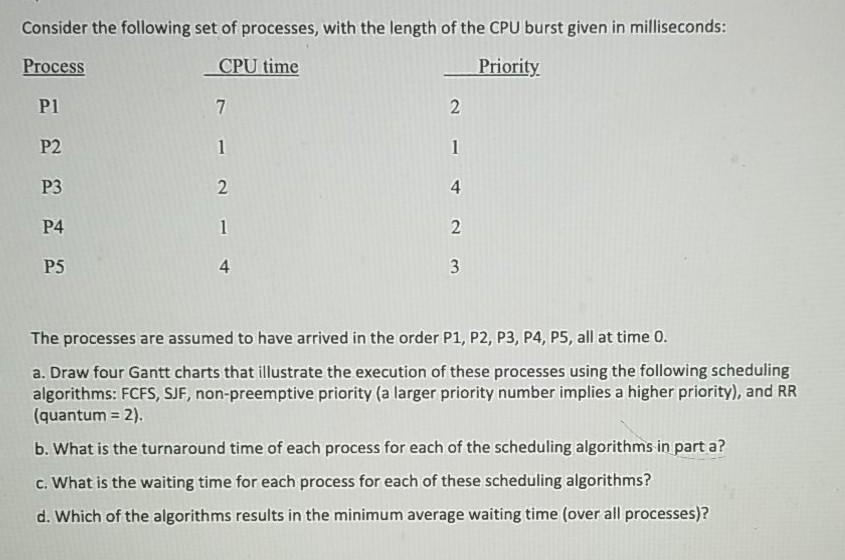Answered step by step
Verified Expert Solution
Question
1 Approved Answer
Consider the following set of processes, with the length of the CPU burst given in milliseconds: Process CPU time Priority P1 7 2 P2 1

Consider the following set of processes, with the length of the CPU burst given in milliseconds: Process CPU time Priority P1 7 2 P2 1 1 P3 2 4 P4 1 2 PS 4 3 The processes are assumed to have arrived in the order P1, P2, P3, P4, P5, all at time 0. a. Draw four Gantt charts that illustrate the execution of these processes using the following scheduling algorithms: FCFS, SJF, non-preemptive priority (a larger priority number implies a higher priority), and RR (quantum = 2). b. What is the turnaround time of each process for each of the scheduling algorithms in part a? c. What is the waiting time for each process for each of these scheduling algorithms? d. Which of the algorithms results in the minimum average waiting time (over all processes)
Step by Step Solution
There are 3 Steps involved in it
Step: 1

Get Instant Access to Expert-Tailored Solutions
See step-by-step solutions with expert insights and AI powered tools for academic success
Step: 2

Step: 3

Ace Your Homework with AI
Get the answers you need in no time with our AI-driven, step-by-step assistance
Get Started


